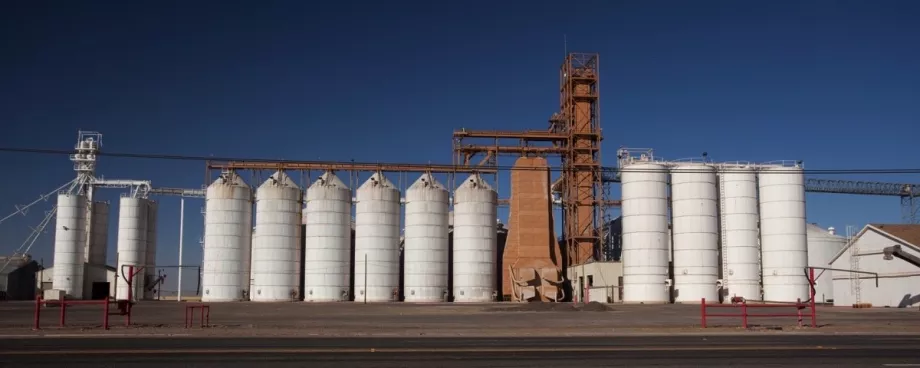(From the archive of ”bulk solids handling", article published in Vol. 32 (2012) No. 1 , ©2012 bulk-online.com)Silos have been used to store all kinds of bulk materials for thousands of years and are available in various shapes and sizes. Knowledge of bulk material behaviour has significantly increased over the last 50 years, so that the process of silo design by trial and error has now been replaced by a set of theoretically and experimentally founded guidelines. For many bulk materials, these guidelines allow to design a silo and hopper in such a way that reliable material flow is achieved without need for additional equipment.
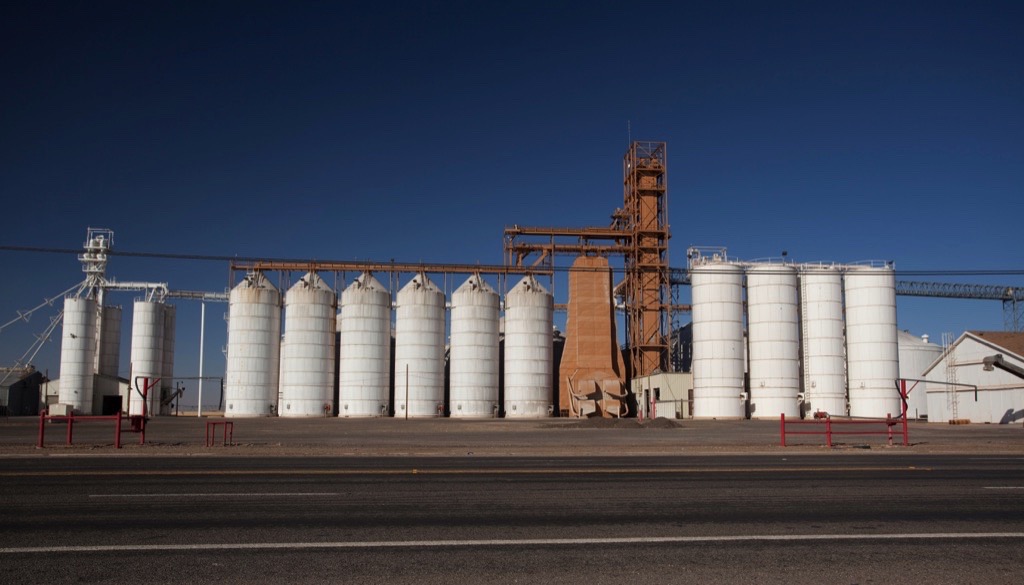
To have a silo designed for reliable flow is certainly the first choice, but this isn't always possible. Quite often, the silo is already there, and the user has to find a way to get along with it without major changes. There are also cases, where the silo has worked reliably for long time before flow problems suddenly occurred, often caused by variations in material properties or a change to an other material.And in some cases, reliable flow by silo design is simply impossible under the given boundary conditions like space restrictions, due to the awkward nature of some bulk materials, e.g. fibrous, spring-like, and highly compressible ones. Here, the suitable discharge aid should already be factored in during the silo design phase.
Selection Basics
Some basic information for the preliminary selection of a suitable type of discharge aid is given in Table 1. according to Bates, the selection of discharge aids should be carried in six steps [2]:
- Determine the maximum operating bounds of variability of the bulk material and determination of all important properties (e.g. cohesion, time consolidation, flowability, particle size distribution, wall friction moisture, abrasiveness, friability, stickyness, etc.)
- Understand process requirements like installations, height restrictions, feedout-demand, maintenance requirements, etc.
- Short list the class of suitable dischargers (more than one method can be suitable, see Table 1).
- Collect detailed information of the suitable dischargers, considering retrofit situation and new bin/silo design separately. Constrains in retrofit situations can be ease of installation, available utilities, maintenance access, effect on process safety, etc.
- Conduct vendor trial, pilot scale test or verify in field.
- Go back to the third step if the concept does not perform well during vendor trials.
| Discharger type | Suitable for: | Unsuitable for: |
| Pneumatic | Cohesive and fluidisable powders | Caked materials; moisture level is cirti- cal; large particles; floodable; dust ex- plosion potential |
| Vibrational | Cohesive, caking, brittle, arching, sticky materials | Powders that tend to consolidate with vibrations; spongy, soft materials |
| Mechanical | Very difficult to handle materials; moisture level is critical;dust explosion potential | Silos with high aspect ratio; friable, springy, soft, abrasive materials |
| Passive | Materials marginally unsuitable for typical hopper design; locations, where utilities for air or electricity are not available | Materials with high variability in flow properties; sticky and caking materials |
Some more detailed information on how to select a suitable discharge aid has been provided by Bates [2] and Bradley [3]. Information on all aspects of bulk materials storage and flow can also be found in [4]. To provide a complete guideline, covering all important aspects of discharge aid selection, including the influencing parameters, exceeds the scope of this article and consulting an independent expert to find the best possible solution is generally recommended.
Available Options
Discharge aids can broadly be classified into two categories: active and passive devices. Passive devices include hopper shape and construction, e.g. plane flow hoppers, or hoppers with one-dimensional convergence, friction liners, insert systems like the cone-in-cone system, the inverted cone, or flow modifiers. These types of discharge aids are not covered here and the reader is referred to publications with a more comprehensive coverage of silo discharge aids [1-4]. Active discharge aids can be grouped into pneumatic, vibratory and mechanical types.
Pneumatic Discharge Aids
There is a wide range of pneumatic discharge aids available, including aeration pads, fluidising hoppers, directed air-jet type systems, and air cannons.Fluidising systems activate material flow by injection of air into the space between the particles, thus increasing inter-particle separation. This method is most effective for finer particles below 20 to 40 microns median particle size. The application is problematic with very cohesive materials, as they tend to form channels through which the air escapes without activating the material. Aeration pads like the WAM I100 are easy to install on existing hoppers as retrofits and add the air at regular intervals during discharging of the bin or silo.Directed air-jet type discharge aids blow the air in parallel to the wall to dislodge the material. Their effective radius is limited and they have to be installed in effective locations or in a sufficiently large number. The Solimar Silo Fluidizer combines aeration and vibration effects by means of a flexible cap pressed against the hopper wall. Directional air flowing between the wall and the cap forces air along bin wall while exciting the cap to gentle vibration, also stimulating material flow.Air cannons inject blasts of high pressure gas, stored within a pressure vessel, into the silo – usually within a fraction of a second. The shockwave created by the air cannon travels through the material faster then the air pressure wave through the spaces between the particles. Therefore, unlike the other aeration systems, air cannons can not only be used with fine powders, but also with coarse materials. Typical applications include the use with sticky, wet, adhesive, caking and fibrous materials to break an arch or rathole.
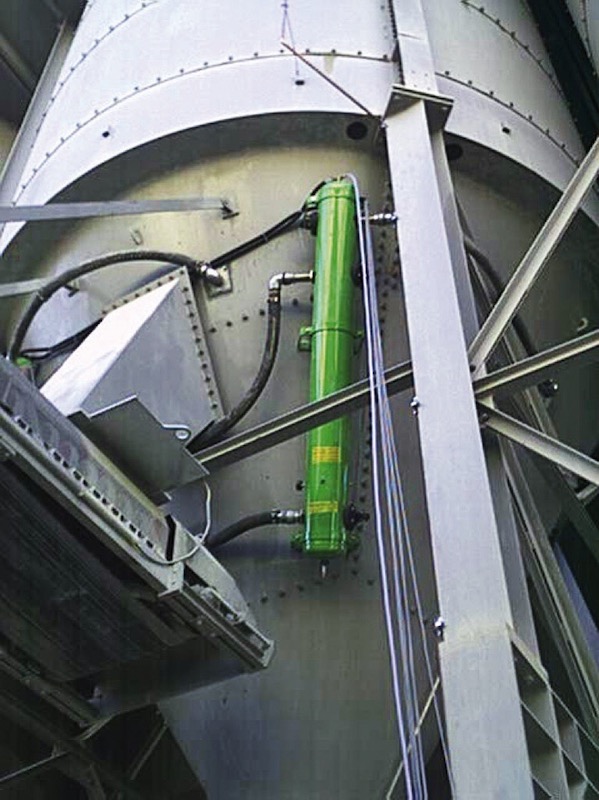
Pressure vessels are available in various sizes and there are also models that can serve several application points, as, for example, the Big Blaster Category 5 Hurricane from Martin Engineering, which provides up to five application points on a single vessel. There are also various types of nozzles available to create different air distribution patterns, e.g. the lance nozzles available for the Matak air cannon from B+W Innovative Produkte (Fig. 2), especially developed for silos or bunkers with flat bottoms.However, when selecting an air cannon, it is important to keep in mind that the high air pressures can result in structural damage if the silo is too small or the material can not give way.
Vibratory Discharge Aids
Vibratory discharge aids are used to address flow problems like arching, ratholing, or incomplete material withdrawal [2]. They can be attached to the outside of the silo or to elements in the path of material flow inside the silo.
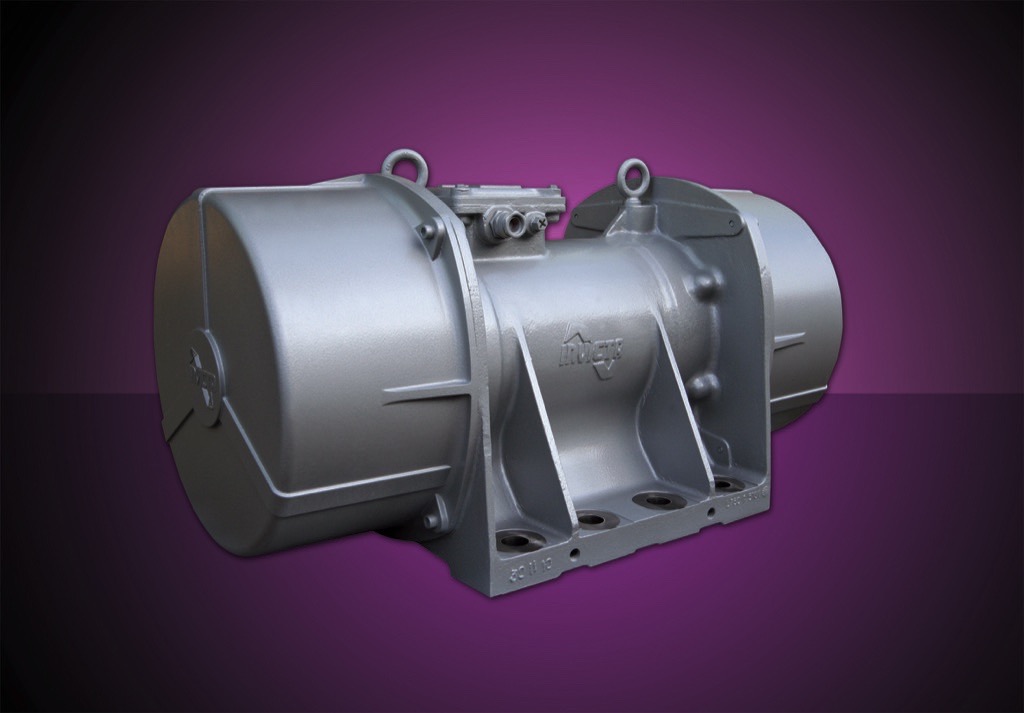
External systems are very wide spread due to their ease of installation. They can be group into linear and rotary systems, either driven by electricity or pressurised air. While the effect of a linear system is basically similar to that of hammer beating the wall, rotary systems, such as Invicta’s BL78 shown in Fig. 3, usually run at higher frequencies and create a force both perpendicular and parallel to the hopper wall. According to Bates [2], rotary vibrators are recommended for dry, cohesive products that tend to arch or form ratholes, while linear vibrators should be used for sticky or wet products.Vibratory equipment should only be operated, when material is taken from the silo, for otherwise the vibration will always result in material consolidation. According to Bradley [3], the use of external vibrators would always be worth a try if the material is not to cohesive or elastic or the discharge problem is not to sever, given the cheapness and ease of installation.
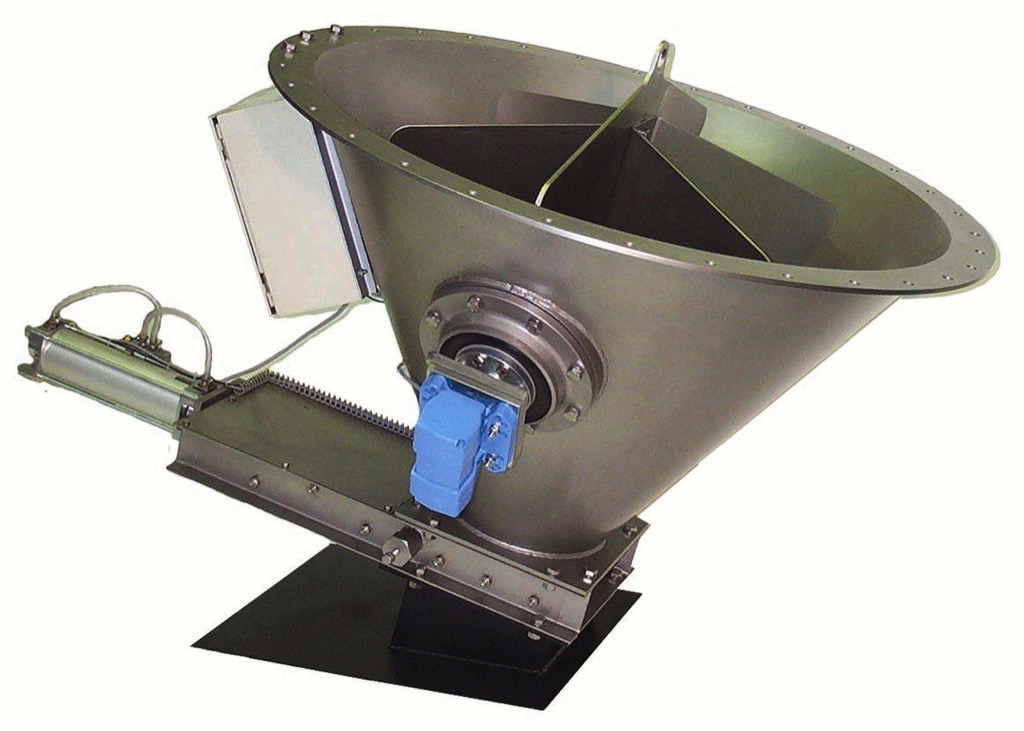
Internal vibratory discharge aids should be used instead of external systems when more sever flow problems occur. The most common systems include vibrating cone systems, internal screens or outlet-plane grid devices. Examples of vibrating cone systems include the Soliflo system, which can sometimes be fitted to an existing bin, and the bin activator, where the cone is rigidly mounted inside a replacement hopper bottom. Another example is the Stanelle discharge vibrating cage, which, due to its flanged design with 60° discharge, can be easily attached or retrofitted to any silo or bunker (Fig. 4).An example of an internal screen is the Mucon Promo-Flow System, which consists of a screen mounted parallel to the hopper cone surface and which is driven by an external vibrator. Outlet-plane grid devices are essential vibrating square screens or grids of a "louver" pattern fitting horizontally across the hopper outlet. Like external vibratory systems, internal solutions should only be operated when material is taken from the silo to avoid consolidation.The various types of mechanical discharge aids will be discussed in another article to be published in the next issue.
A Note from the Editor
For all statements in this article that refer – directly or indirectly – to the time of publication (for example “new”, “now”, “present”, but also expressions such as “patent pending”), please keep in mind that this article was originally published in 2012.
References:
- Reed, A. R., Duffel, C. H.: A review of hopper discharge aids. bulk solids handling Vol. 3 (1983) No. 1.
- Bates, L., Dhodapkar, S., Klinzing, G.: Discharge aids. Shapa Technical Bulletin No. 12.
- Bradley, M. S. A.: Obtaining reliable flow from existing hoppers: strategy for selecting the solution. Shapa Technical Bulletin No. 4.
- Schulze, D.: Powders and bulk solids. Springer-Verlag, Berlin 2008.
■



